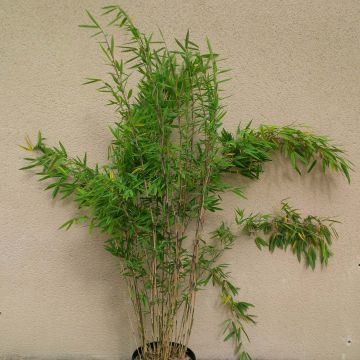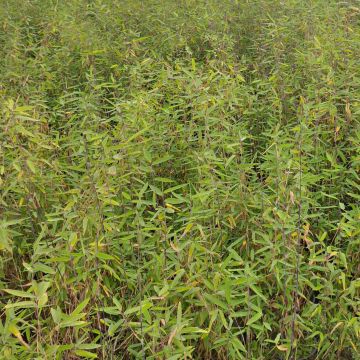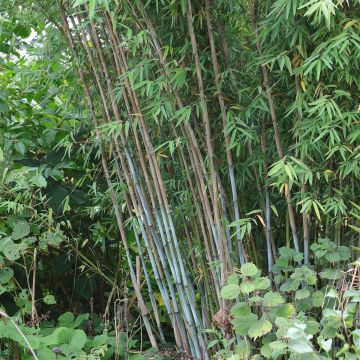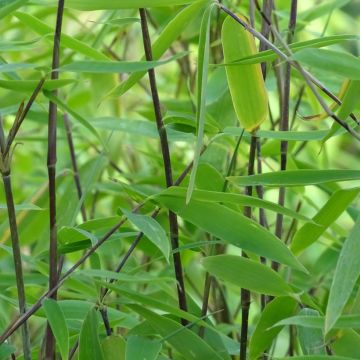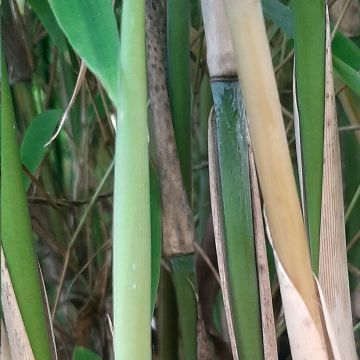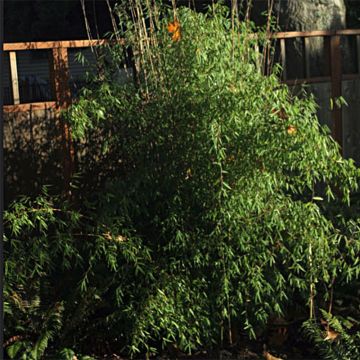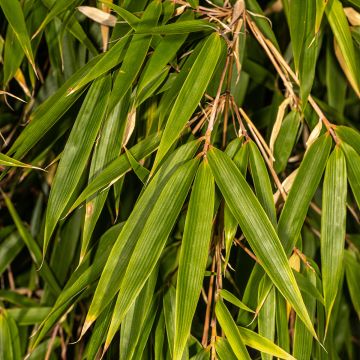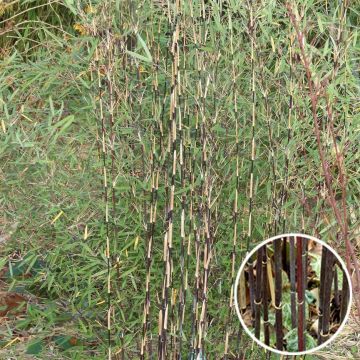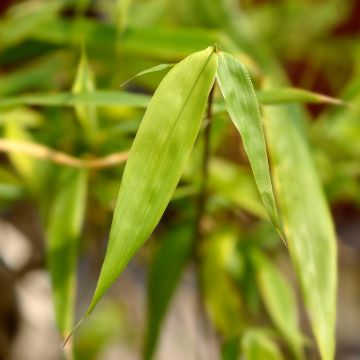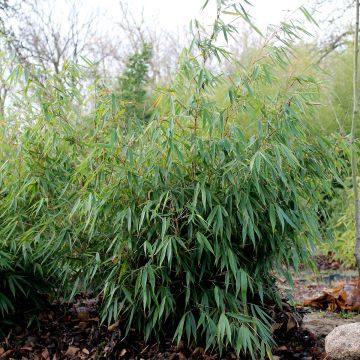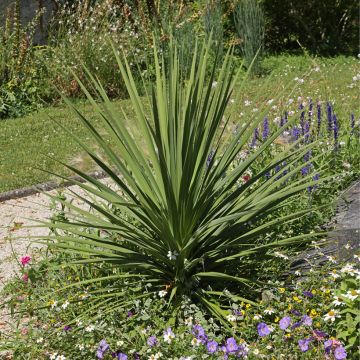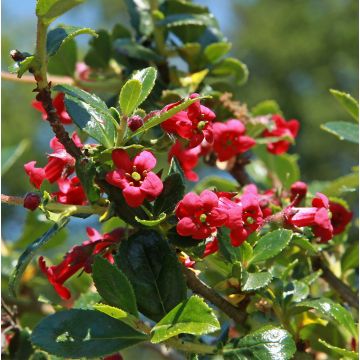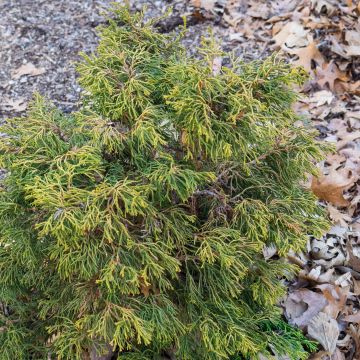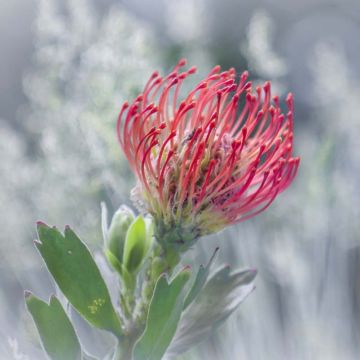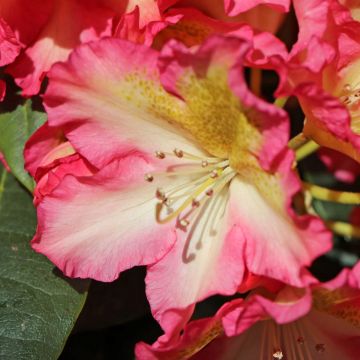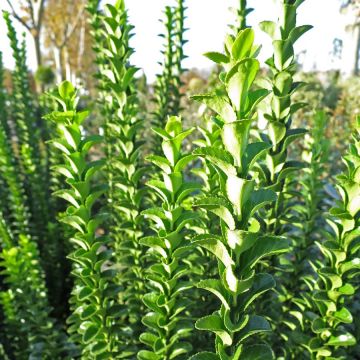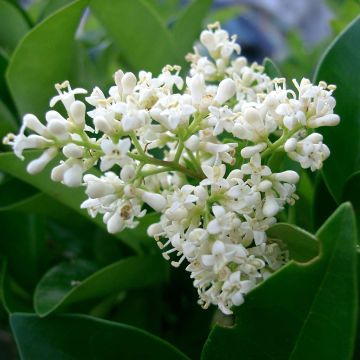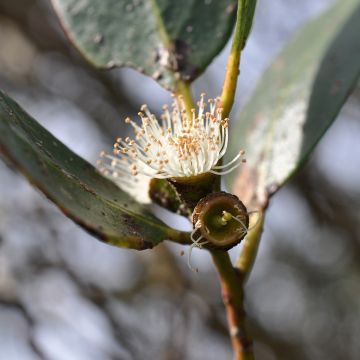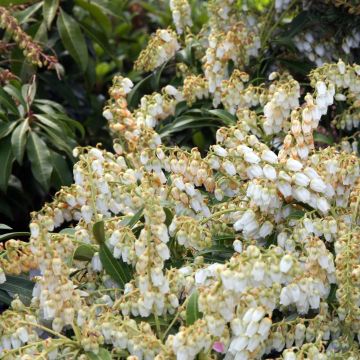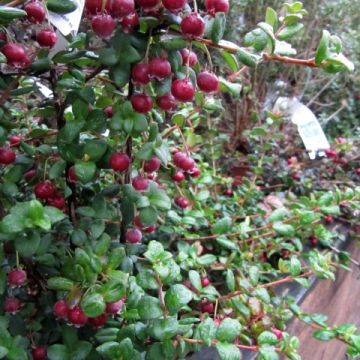

Fargesia robusta Pingwu - Non-running bamboo
Fargesia robusta Pingwu
Wolong Bamboo
This item cannot be shipped to the selected country
Delivery charge from €5.90
Delivery charge from €5.90
Delivery charge from €5.90
More information
Schedule delivery date,
and select date in basket
This plant carries a 24 months recovery warranty
More information
We guarantee the quality of our plants for a full growing cycle, and will replace at our expense any plant that fails to recover under normal climatic and planting conditions.
From €5.90 for pickup delivery and €6.90 for home delivery
Express home delivery from €8.90.
From €5.90 for pickup delivery and €6.90 for home delivery
Express home delivery from €8.90.
From €5.90 for pickup delivery and €6.90 for home delivery
Express home delivery from €8.90.

Does this plant fit my garden?
Set up your Plantfit profile →
Description
The Fargesia robusta Pingwu is a variety of bamboo of medium size, non-invasive, original and highly ornamental: its white stem sheaths contrast elegantly with the green of its canes. It is a very architectural bamboo, remarkable in contemporary settings.
Native to China, specifically the Sichuan region, the Fargesia robusta Pingwu has an erect, dense and compact habit. It has green canes approximately 2cm (0.8in) in diameter, adorned with medium-sized, bright green leaves. Its growth is relatively fast, reaching a height of 2.5 to 4.5m (8.2 to 14.7ft) in a few years. Perfectly hardy, it can withstand temperatures as low as -20°C (-4°F) (in case of snowfall, remember to shake off the canes to prevent damage). It is a variety that tolerates drought well.
Bamboos are not demanding plants, they thrive in any garden soil. However, their growth rate and maximum height will be influenced by the quality and moisture content of the soil. Ideally, plant them in acidic or neutral, light, moist and well-drained soil. In terms of exposure, we recommend planting your Fargesia robusta Pingwu in partial shade or full sun, as it tolerates both without any issues.
The Fargesia robusta Pingwu is a clump-forming bamboo, it is not invasive. The installation of a rhizome barrier is therefore unnecessary.
A star in Asian-inspired gardens, bamboo suits many styles, from the most modern to the most traditional. When planted en masse, it quickly creates small, exotic forests, adding beautiful vertical elements to modern gardens and terraces. Its fast growth also makes it an excellent plant for managing privacy in crowded spaces. The Fargesia robusta Pingwu can be grown in containers, allowing it to be used as a leafy screen to create intimate spaces on terraces.
The presence of bamboo is such that you can plant it as a standalone specimen. In flower beds, it pairs well with many plants. We recommend combining it, in a contemporary flower bed in partial shade, with variegated Hostas and Hydrangea macrophylla Magical Jade.
Did you know? Bamboos belong to the large family of Poaceae, just like wheat or even couch grass, with which they share the rhizomatous character. Indeed, bamboo is a very unique type of plant, which can be likened to a giant woody grass.
Report an error about the product description
Fargesia robusta Pingwu - Non-running bamboo in pictures
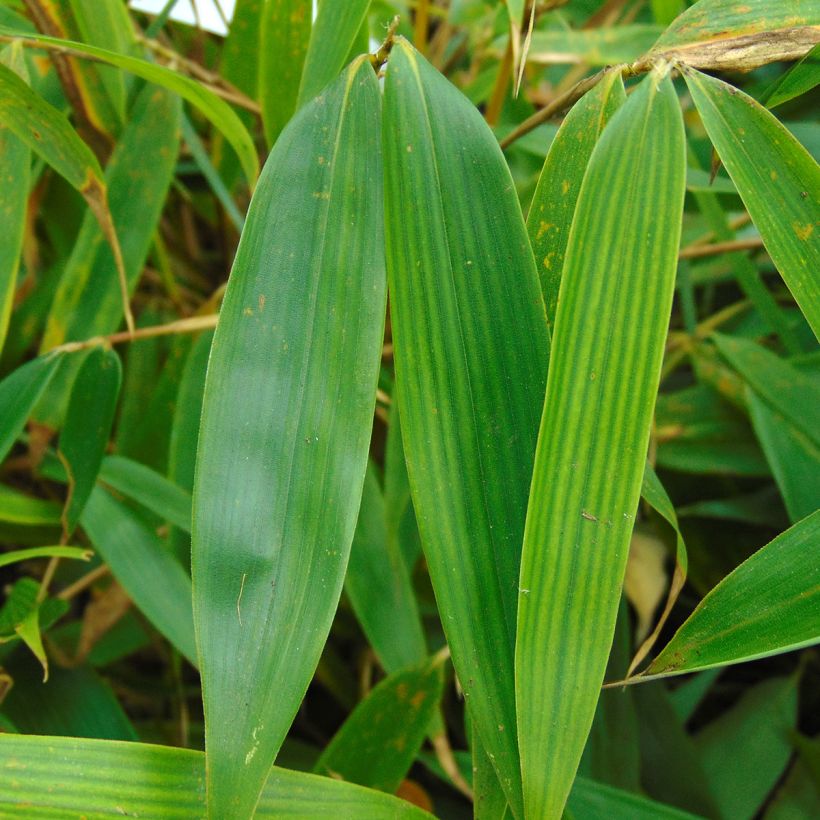

Plant habit
Foliage
Botanical data
Fargesia
robusta
Pingwu
Poaceae
Wolong Bamboo
China
Other Fargesia
Planting and care
Grown in containers, bamboo can be planted at any time of the year, except during freezing conditions. However, the best planting period is late summer and autumn, when the soil is warm and rainfall is more frequent. The planting distance depends on how you will use your bamboo: for mass planting, allow a spacing of 0.8 to 1m (2.6 to 3.2ft) between each plant. For hedges, this distance is reduced to 0.6 to 0.8m (23 to 31in)
In general, bamboo prefers rich, well-drained soil that remains moist, either acidic or neutral. They can tolerate slightly alkaline soil.
During planting loosen the soil and moisten the root ball by soaking it. You can add well-rotted compost on the surface. Watering should be done regularly, at least during the first year when planted in the ground, and continued if your bamboo is grown in a pot. The establishment time may sometimes seem a bit long, but don't panic!
This bamboo does not spread, so the installation of a rhizome barrier (thick and resistant polypropylene film) is therefore not required.
In terms of maintenance, bamboo is not demanding: remember to weed around the base of the plant, at least during the first period until its dead leaves, left on the ground, form a natural mulch. An application of nitrogen fertilizer (well-rotted manure or liquid fertilizer) in spring and autumn can be beneficial.
Planting period
Intended location
Care
-
, onOrder confirmed
Reply from on Promesse de fleurs
Evergreen shrubs
Haven't found what you were looking for?
Hardiness is the lowest winter temperature a plant can endure without suffering serious damage or even dying. However, hardiness is affected by location (a sheltered area, such as a patio), protection (winter cover) and soil type (hardiness is improved by well-drained soil).

Photo Sharing Terms & Conditions
In order to encourage gardeners to interact and share their experiences, Promesse de fleurs offers various media enabling content to be uploaded onto its Site - in particular via the ‘Photo sharing’ module.
The User agrees to refrain from:
- Posting any content that is illegal, prejudicial, insulting, racist, inciteful to hatred, revisionist, contrary to public decency, that infringes on privacy or on the privacy rights of third parties, in particular the publicity rights of persons and goods, intellectual property rights, or the right to privacy.
- Submitting content on behalf of a third party;
- Impersonate the identity of a third party and/or publish any personal information about a third party;
In general, the User undertakes to refrain from any unethical behaviour.
All Content (in particular text, comments, files, images, photos, videos, creative works, etc.), which may be subject to property or intellectual property rights, image or other private rights, shall remain the property of the User, subject to the limited rights granted by the terms of the licence granted by Promesse de fleurs as stated below. Users are at liberty to publish or not to publish such Content on the Site, notably via the ‘Photo Sharing’ facility, and accept that this Content shall be made public and freely accessible, notably on the Internet.
Users further acknowledge, undertake to have ,and guarantee that they hold all necessary rights and permissions to publish such material on the Site, in particular with regard to the legislation in force pertaining to any privacy, property, intellectual property, image, or contractual rights, or rights of any other nature. By publishing such Content on the Site, Users acknowledge accepting full liability as publishers of the Content within the meaning of the law, and grant Promesse de fleurs, free of charge, an inclusive, worldwide licence for the said Content for the entire duration of its publication, including all reproduction, representation, up/downloading, displaying, performing, transmission, and storage rights.
Users also grant permission for their name to be linked to the Content and accept that this link may not always be made available.
By engaging in posting material, Users consent to their Content becoming automatically accessible on the Internet, in particular on other sites and/or blogs and/or web pages of the Promesse de fleurs site, including in particular social pages and the Promesse de fleurs catalogue.
Users may secure the removal of entrusted content free of charge by issuing a simple request via our contact form.
The flowering period indicated on our website applies to countries and regions located in USDA zone 8 (France, the United Kingdom, Ireland, the Netherlands, etc.)
It will vary according to where you live:
- In zones 9 to 10 (Italy, Spain, Greece, etc.), flowering will occur about 2 to 4 weeks earlier.
- In zones 6 to 7 (Germany, Poland, Slovenia, and lower mountainous regions), flowering will be delayed by 2 to 3 weeks.
- In zone 5 (Central Europe, Scandinavia), blooming will be delayed by 3 to 5 weeks.
In temperate climates, pruning of spring-flowering shrubs (forsythia, spireas, etc.) should be done just after flowering.
Pruning of summer-flowering shrubs (Indian Lilac, Perovskia, etc.) can be done in winter or spring.
In cold regions as well as with frost-sensitive plants, avoid pruning too early when severe frosts may still occur.
The planting period indicated on our website applies to countries and regions located in USDA zone 8 (France, United Kingdom, Ireland, Netherlands).
It will vary according to where you live:
- In Mediterranean zones (Marseille, Madrid, Milan, etc.), autumn and winter are the best planting periods.
- In continental zones (Strasbourg, Munich, Vienna, etc.), delay planting by 2 to 3 weeks in spring and bring it forward by 2 to 4 weeks in autumn.
- In mountainous regions (the Alps, Pyrenees, Carpathians, etc.), it is best to plant in late spring (May-June) or late summer (August-September).
The harvesting period indicated on our website applies to countries and regions in USDA zone 8 (France, England, Ireland, the Netherlands).
In colder areas (Scandinavia, Poland, Austria...) fruit and vegetable harvests are likely to be delayed by 3-4 weeks.
In warmer areas (Italy, Spain, Greece, etc.), harvesting will probably take place earlier, depending on weather conditions.
The sowing periods indicated on our website apply to countries and regions within USDA Zone 8 (France, UK, Ireland, Netherlands).
In colder areas (Scandinavia, Poland, Austria...), delay any outdoor sowing by 3-4 weeks, or sow under glass.
In warmer climes (Italy, Spain, Greece, etc.), bring outdoor sowing forward by a few weeks.

































